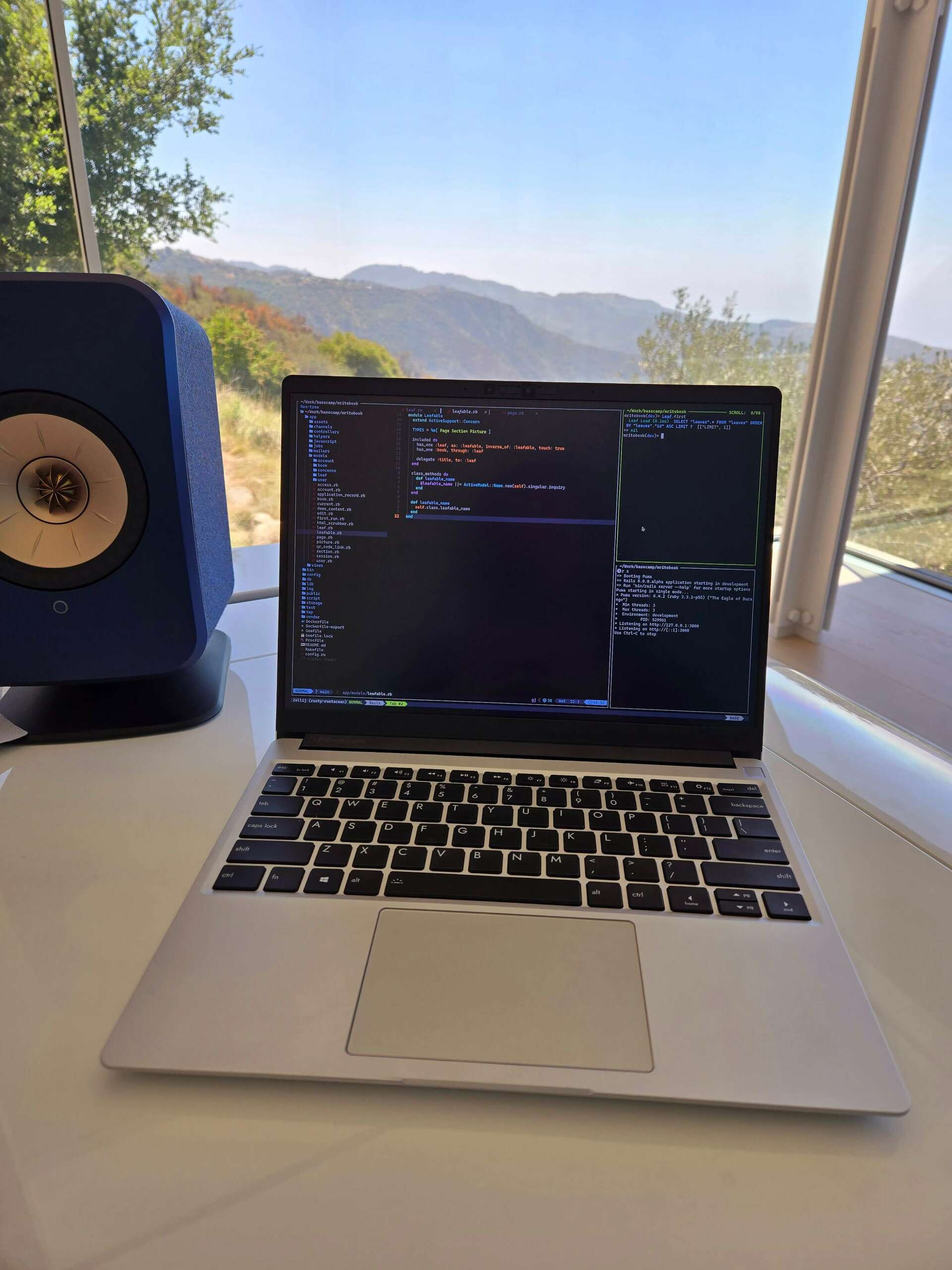The first laptop I ordered back when my Linux journey began was the Framework 13. I immediately liked a lot about it. The keyboard is a big step up over the MacBook Pro, primarily because of the 50% longer key travel. And I love the matte screen and 3:2 aspect ratio. Both feel way nicer for programming.
But running a 2256x1504 resolution on a 13.5" screen means a PPI of just 200, which is only barely acceptable for a crisp-font snob like myself, and below both the MacBook Air at 224 and the MacBook Pro at 254. This, more than even the difference in battery life, was why I kept looking around at other PC laptops.
I tried options from Tuxedo, Samsung, and Dell, but while all of them had something solid to offer, the entire package never spoke to me like the Framework did. And while I kept looking for something else, I realized that the Framework was really growing on me. Especially after figuring out that I could get a very enjoyable setup running at 200% resolution but at a 0.8 font sizing with Linux.
And after a few weeks, I accepted that the slightly less crisp screen was worth the sacrifice to enjoy the rest of the amazing Framework package. And even if you could have offered me the MacBook Pro's 254 PPI display on this machine, I wouldn't have done the swap, after the 3:2 aspect ratio and matte finish won me over.
But now Framework has fixed it! They've just released a new 13.5" screen running a 2880x1920 resolution for a MacBook Pro-beating 256 PPI! And it's still matte and 3:2! AND 120HZ! Hallelujah!
What's even cooler is that this new screen can be retrofitted to existing Framework laptops. And that's exactly what I've done. It's a $269 upgrade, so it's not cheap, but it's a hellavu lot cheaper than buying a whole new computer. Not to mention way less wasteful.
The installation is involved enough that you feel like you've made a real personal contribution to your hardware, but without feeling complicated or onerous. I probably had the swap done in about five minutes. No special tooling needed. Very cool.
And the screen itself is just wonderful. The text is considerably crisper than a MacBook Air, and fully on par with a MacBook Pro. The response time has also been improved over the last Framework screen, so where really keen eyes could detect some ghosting on fast moving objects with the old display, like a white mouse hand on a black background, that's totally gone now. Oh, and you no longer need the 0.8 text hack for Linux to look right at 200%.
Now, it's not totally perfect. There's a small battery hit if you run it at 120hz on battery, because Linux still only has experimental support for variable refresh rates, and in my testing, it still needs more work (but apparently the next version of Gnome will sort this). But you can just set it to 60hz when on the go, and you'll still get those roughly 6 hours of mixed use from the 61wh battery.
As you can tell, I really like this new screen. It takes the last reservation I had about the Framework 13 and turns it into a key strength. In fact, I'd go so far as to say that this is the best looking laptop screen I've ever used for programming. The combination of 256 PPI, matte covering, 3:2 aspect ratio, and 120hz is amazing for working with text.
Now I'm sure a video editor would still prefer Apple's 16:10 aspect ratio, glossy display, and color-corrected profile of a MacBook Pro. But for programmers? The Framework is better.
And it's such a good deal in its AMD version. You can get a 7640U with the new screen, 32GB of RAM, and 1TB of storage for just around $1,200. Even slightly cheaper if you just get the RAM and storage from Amazon. That's a ton of amazing computer for the money (and almost half of what a MacBook Pro with 24GB of RAM and 1TB of storage costs!). It's what I use as my daily-driver laptop.
